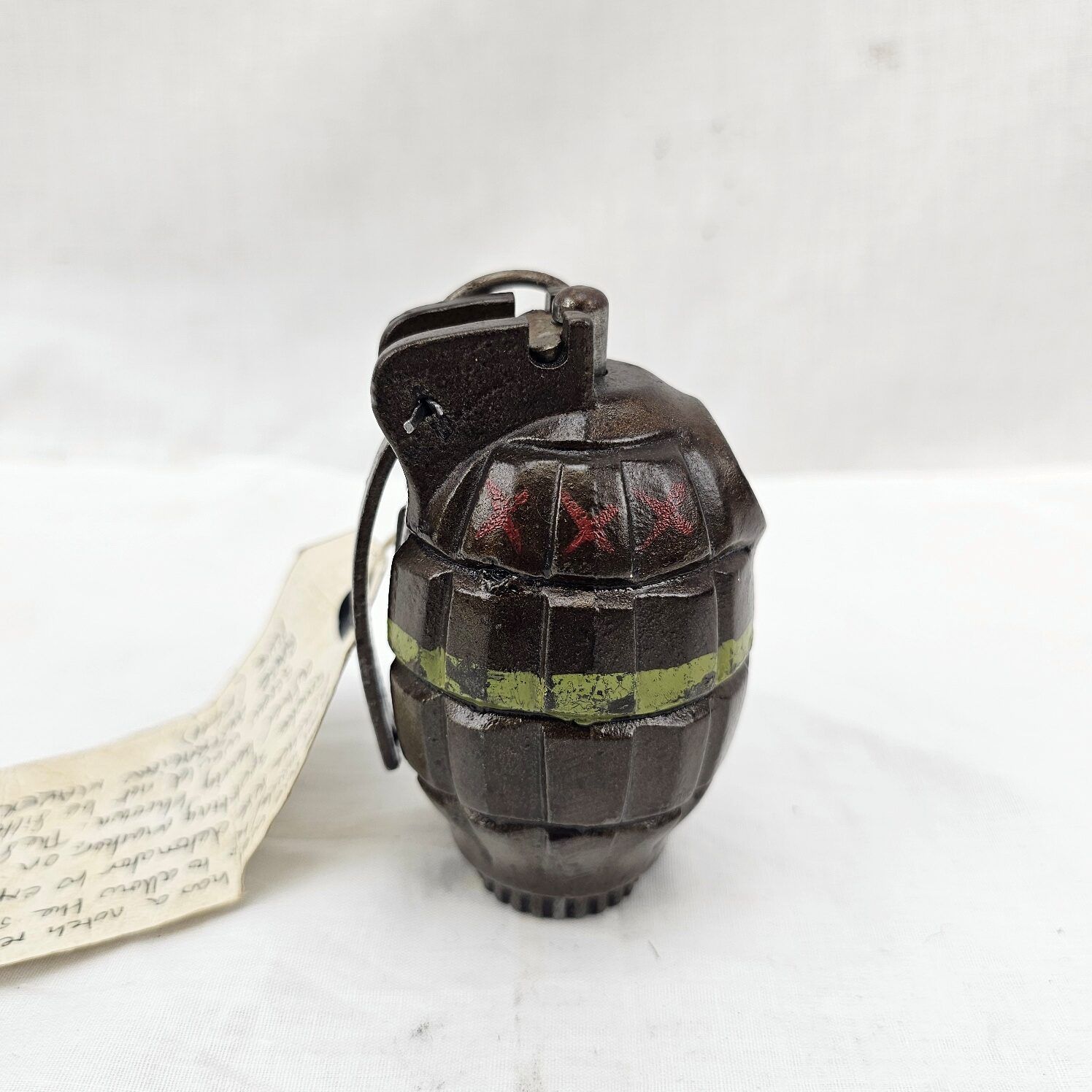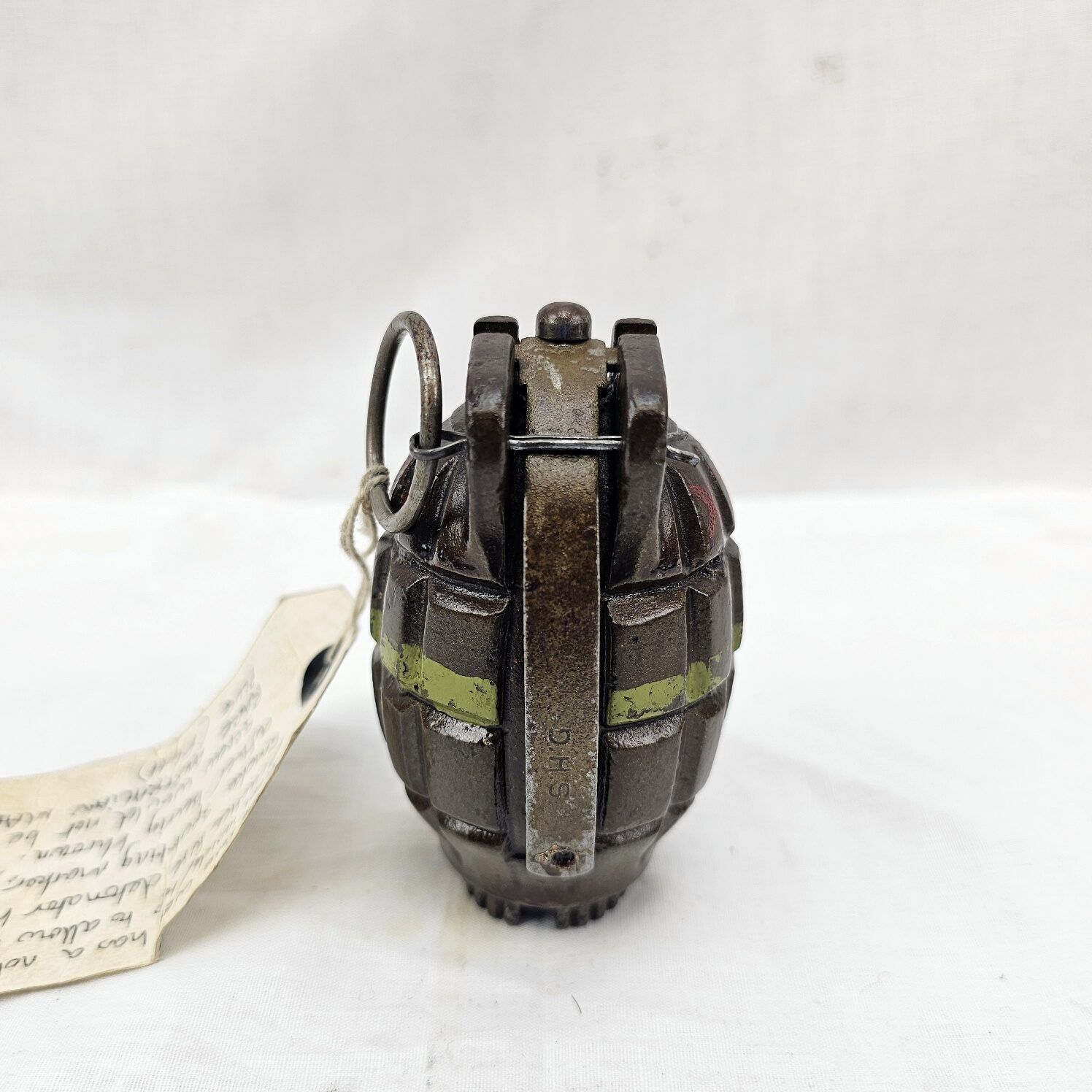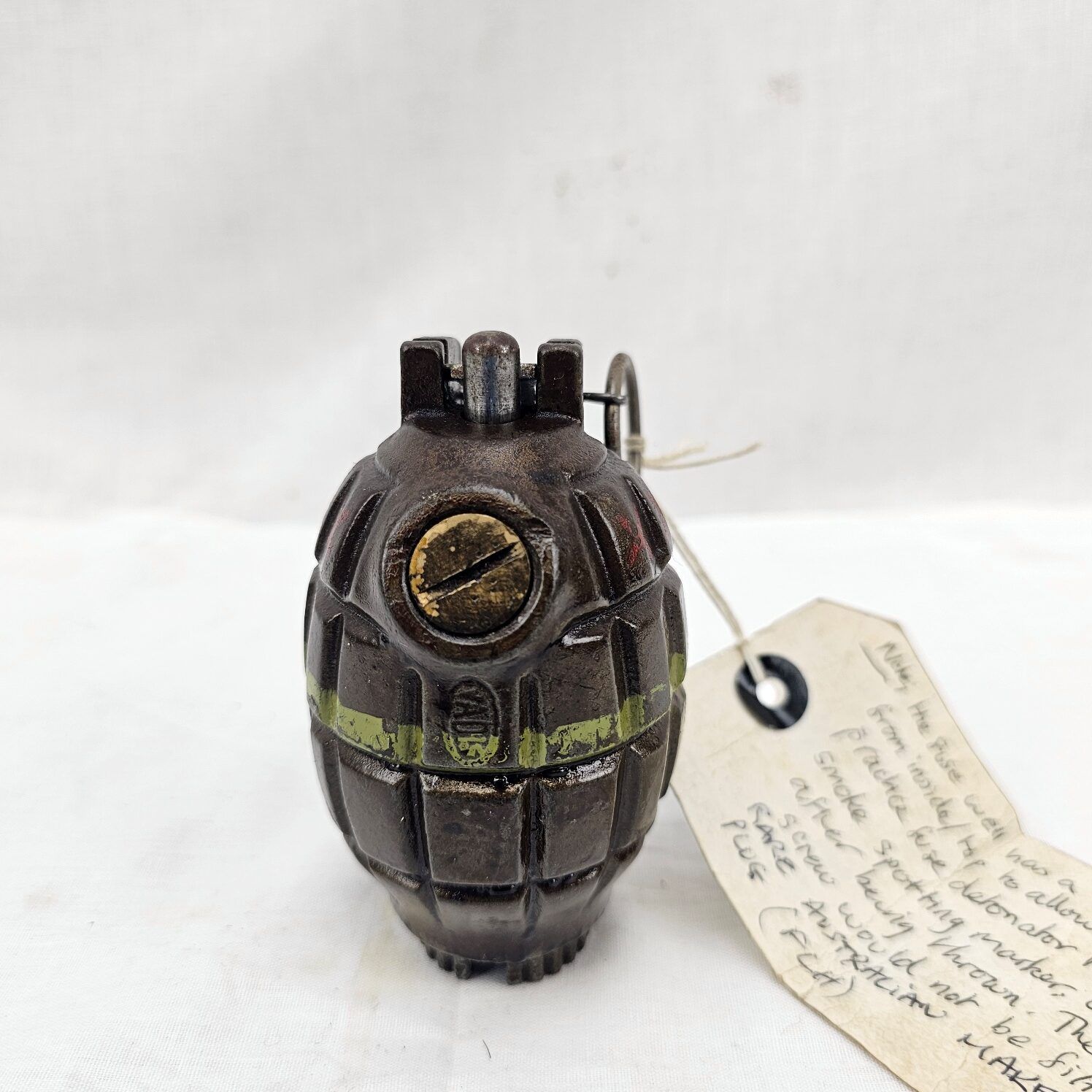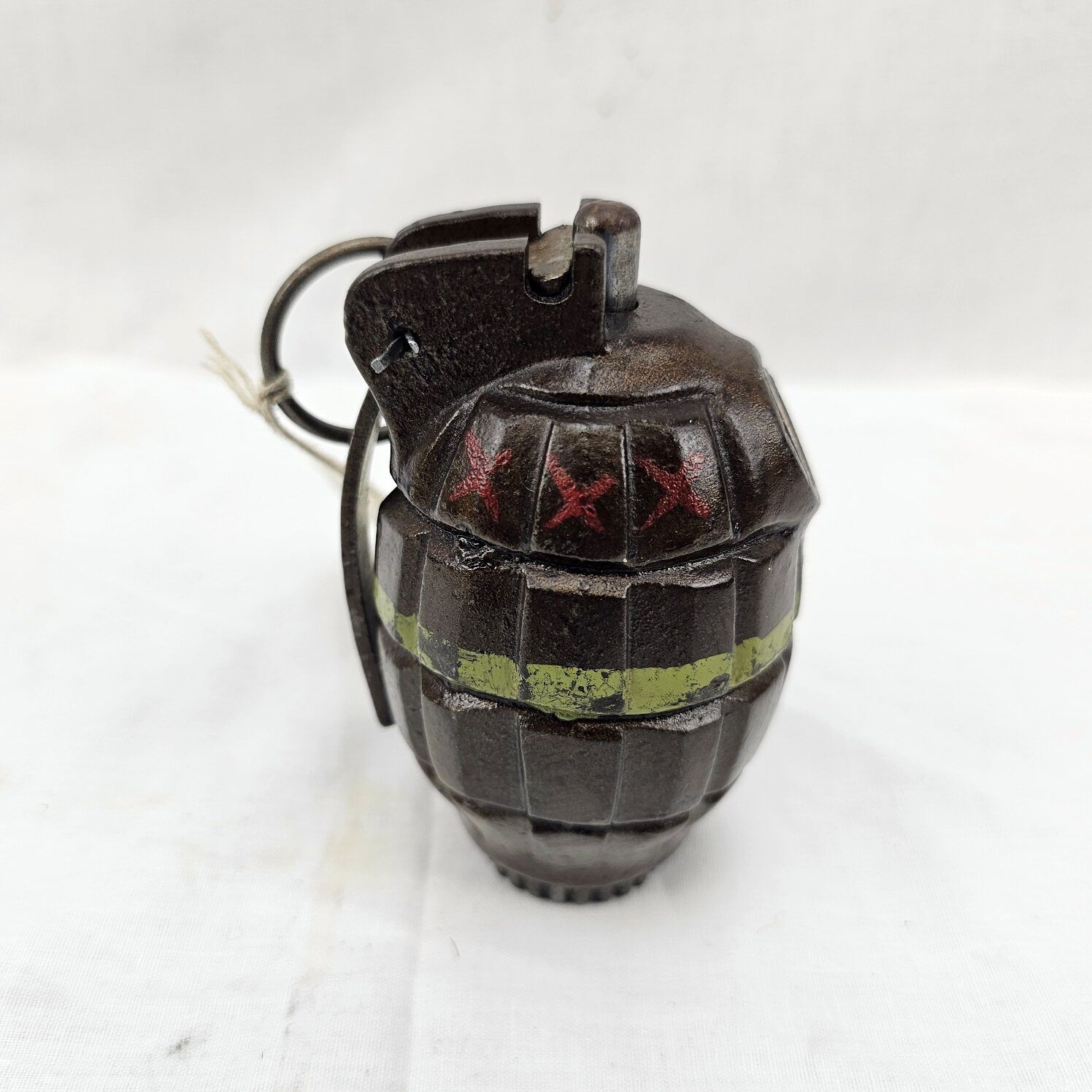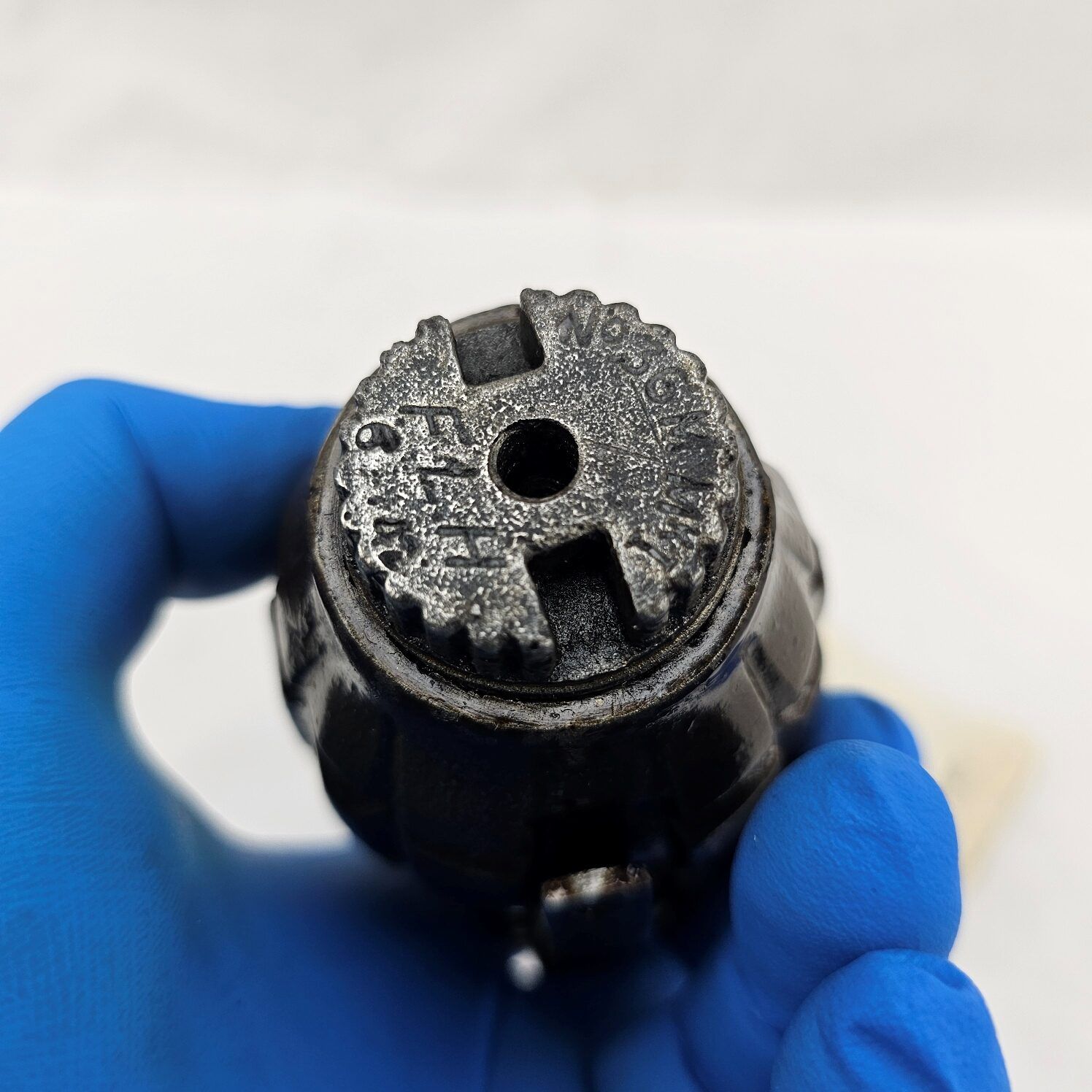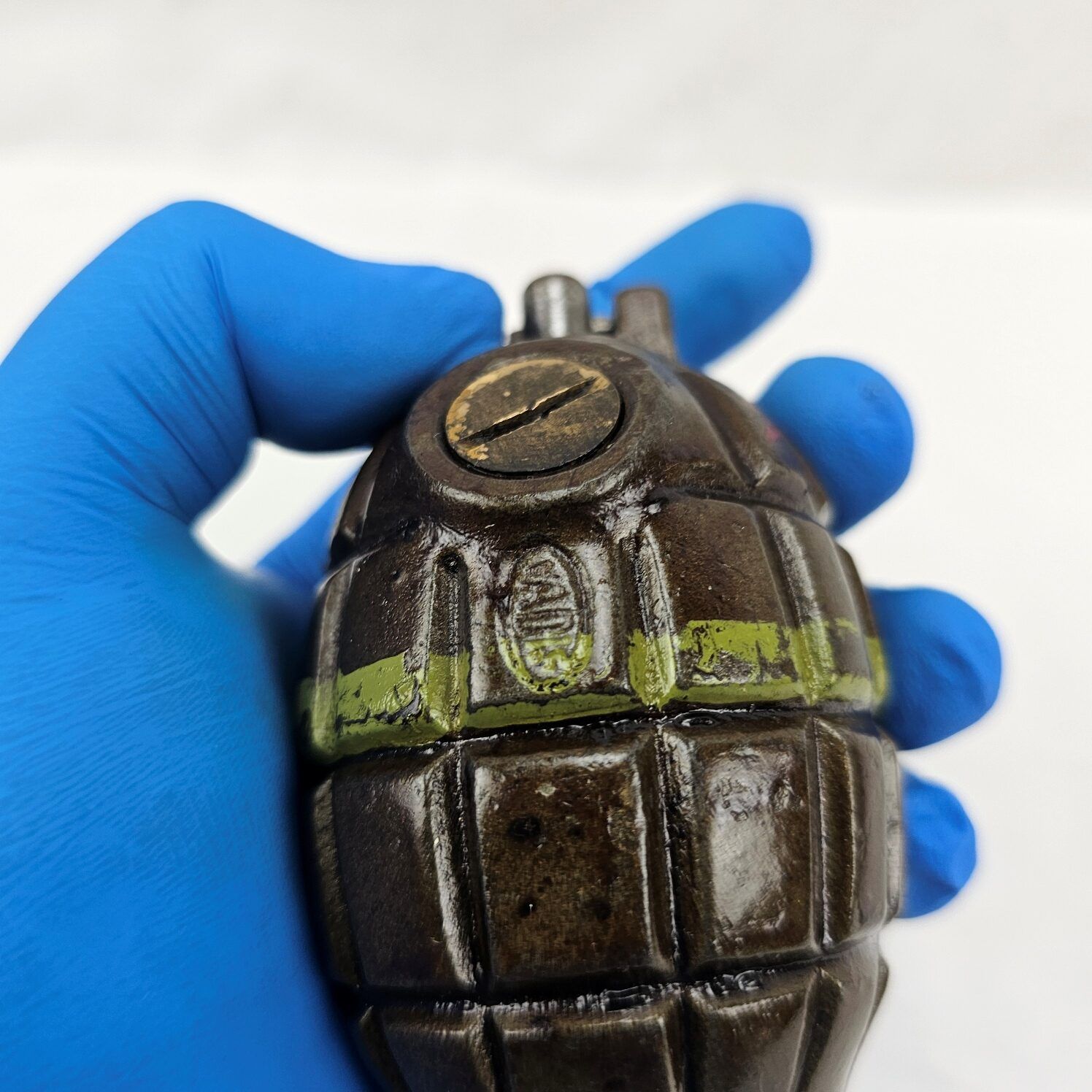~ Rare British-Australian No. 30 MK I Mills Bomb Grenade Dated 1942 by Vadis & F.L. Hudson Brisbane Australia ~
The British-Australian No. 30 Mk I Mills Bomb Grenade, dated 1942 and manufactured by Vadis & F.L. Hudson in Brisbane, Australia, is a notable piece of World War II ordnance. Here is an overview of its history, features, and usage:
Overview of the No. 30 Mk I Mills Bomb Grenade
History:
Development: The Mills Bomb, also known as the Mills Hand Grenade, was developed by William Mills in 1915. It became the standard British hand grenade and saw extensive use in both World War I and World War II.
Australian Manufacture: During World War II, various Commonwealth countries, including Australia, produced the Mills Bomb to meet the demand for ordnance. The No. 30 Mk I was one such variant produced by Australian manufacturers like Vadis & F.L. Hudson in Brisbane.
Features:
Design: The Mills Bomb is a fragmentation grenade with a distinctive pineapple shape, designed to maximize the distribution of shrapnel upon detonation.
Material: The grenade is typically made from cast iron, which allows for effective fragmentation.
Fuze: The grenade uses a percussion fuze that ignites upon release of the safety lever, initiating a delay before detonation.
Markings: Grenades manufactured in 1942 by Vadis & F.L. Hudson would typically be marked with the manufacturer’s name, the year of manufacture, and possibly other identifying marks like a broad arrow indicating British Commonwealth military property.
Usage:
Tactical Role: The Mills Bomb was used by infantry for clearing trenches, bunkers, and other fortified positions. Its fragmentation effect made it effective against enemy personnel.
Training: Soldiers were trained extensively in the use of the Mills Bomb, including safety procedures, throwing techniques, and tactical applications.
Specifics of the No. 30 Mk I Variant:
Model Number: The No. 30 Mk I designation refers to a specific version of the Mills Bomb used during World War II.
Manufacture Date: The 1942 date indicates it was produced during the height of World War II, when demand for such ordnance was at its peak.
Manufacturer: Vadis & F.L. Hudson in Brisbane, Australia, was one of the manufacturers tasked with producing these grenades. Their involvement showcases the collaborative war effort among Commonwealth nations.
Identification:
Visual Inspection: The grenade should have distinct markings indicating “No. 30 Mk I,” the manufacturer’s name (Vadis & F.L. Hudson), and the year of manufacture (1942).
Condition: As a historical artifact, the condition may vary, but markings should still be identifiable.
Collectibility:
Historical Value: Grenades like the No. 30 Mk I Mills Bomb are valued by collectors and historians for their historical significance and role in World War II.
Rarity: Grenades manufactured in Australia, especially those with clear markings and in good condition, can be rare and sought after by collectors.



